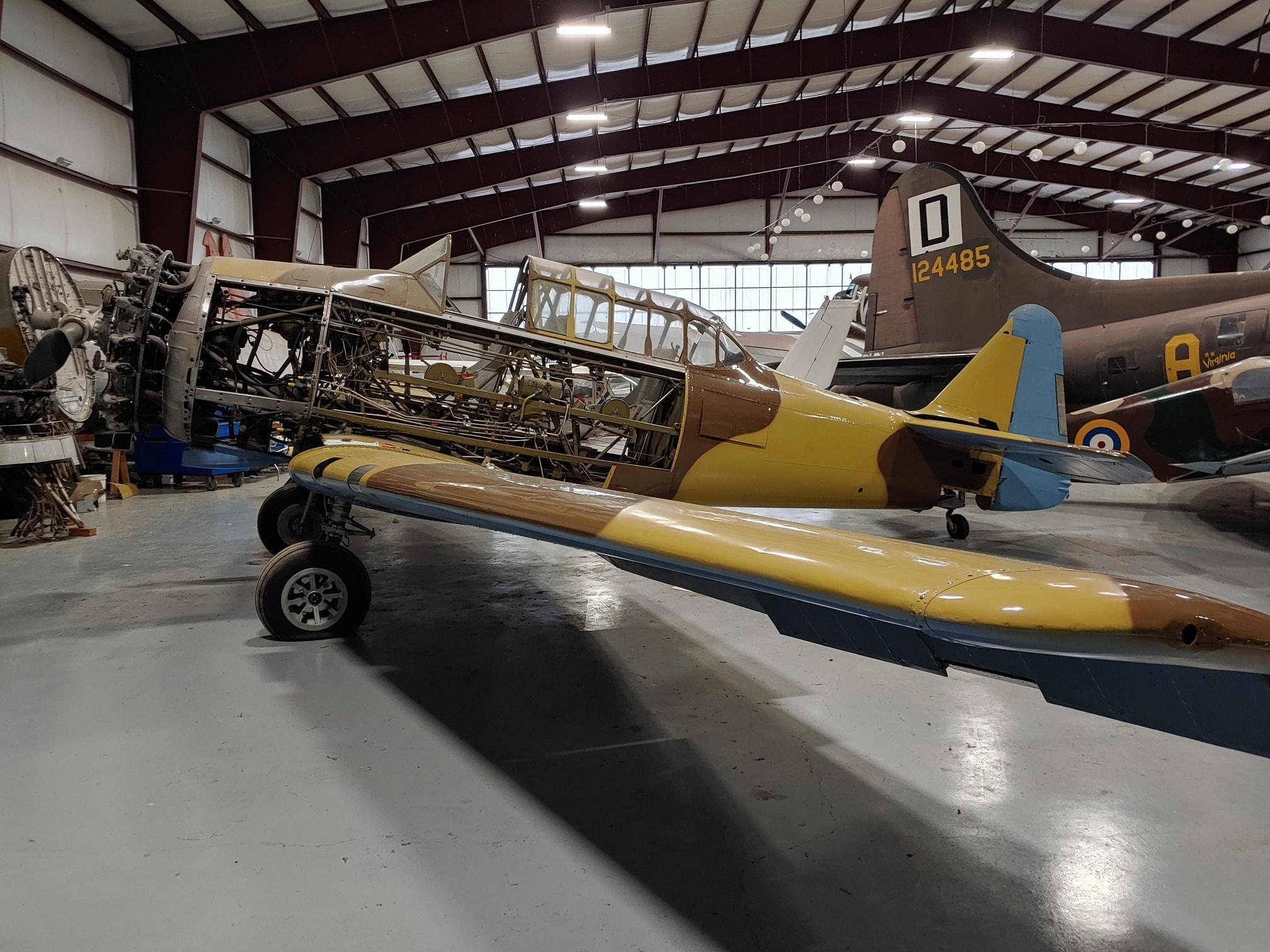
AT-6A
Harvard Mk. II
"Texan"

"Texan"
National Warplane Museum
The AT-6 Texan - known as the Harvard in British and Commonwealth service - was the advanced trainer that prepared thousands of Allied pilots for combat during World War II. Its powerful engine, retractable landing gear, and complex handling characteristics made it an ideal platform for transitioning pilots from basic trainers to front-line fighters like the P-51 Mustang.
Introduced in the late 1930s, the North American AT-6 series became the standard advanced trainer for U.S., British, Canadian, and Allied forces. Pilots learned essential combat skills in the AT-6, including formation flying, aerobatics, gunnery, and instrument navigation — critical training before moving on to high-performance combat aircraft. The aircraft remained in service well beyond WWII, training generations of military pilots into the 1950s.
For many WWII pilots, the AT-6 represented the final stage of training before entering combat. Its performance and flight characteristics provided a critical bridge between basic trainers like the PT-17 Stearman and front-line fighters. In addition to its training role, AT-6 variants also served in forward air control, observation, and light attack roles during and after the war.
North American Harvard Mk. II (Manufacturer’s No. 66-2401 / RCAF No. 2668)
Built in 1940, this Harvard Mk. II was delivered to the Royal Canadian Air Force under the Commonwealth Air Training Plan. It was officially brought on charge on November 16, 1940, serving as an advanced trainer throughout WWII and into the postwar years, before being struck off charge on October 11, 1960 after two decades of service.
Following its military career, it was purchased in 1969 by Austin Wadsworth, who flew the aircraft for several years before initiating a full teardown restoration. Restoration work progressed steadily until the 2010s, when the Museum’s growing collection shifted resources toward newly acquired aircraft. Today, restoration efforts are once again moving forward.
The restoration of this Harvard Mk. II reflects the Museum’s dedication to preserving not only the machines of WWII aviation, but the personal journeys of those who flew them.
WWII Advanced Trainer
Purchased in 1969
Method: Purchased
Hangar #1
Other aircrafts in our collection


